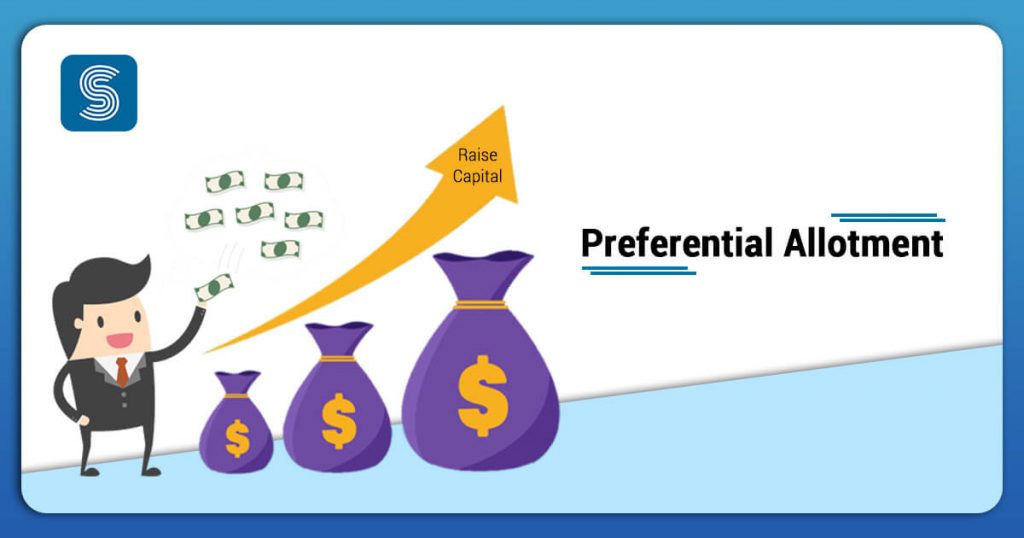How a Company Raise Capital via Preferential Allotment?

Dashmeet Kaur | Updated: Nov 12, 2019 | Category: SEBI Advisory
The Company Act 2013, has prescribed several methods to raise the capital of a company, which include right issue of shares, employee stock ownership plan (ESOP), preferential allotment, sweat equity shares, and IPOs. Among all the stated methods, it seems that the preferential allotment is the best fundraising source for unlisted companies.
The provisions and procedure of preferential allotment of shares fall under Section 62 (allocation of shares) and Second 42 (allotment of securities). For the issue of shares, a company must comply with both the Sections, whereas, for the issue of securities, it requires to comply with the provisions of Section 42 only. If you also want to raise your company’s fund via preferential allotment, then it’s essential to perceive the knowledge of this method and how it functions.
Table of Contents
What is the Concept of Preferential Allotment?
Preferential allotment refers to the process of allotting shares to a selected group of people or companies on a preferred basis. It is the most effective way of raising funds. Any listed company on a stock exchange has the right to allot shares on a preferential basis. It is indispensable for the listed companies to follow the rules & provisions of SEBI during the process of preferential allotment. While in the case of unlisted companies, the norms of Companies Act, 2013, will be applicable.
It creates a win-win situation for both, wherein the company raises its funds, and the preference shareholders get the dividend as per their priority. Also, the company receives the authority to meet its financial needs by raising funds from the public. Generally, the allotment of shares is a time-consuming and complicated procedure. However, the concept of shortlisting shareholders saves much time and becomes more feasible for companies to raise funds.
Reasons to choose this option of Raising Capital
The main reason to choose preferential allotment over other methods is that it is a faster way for a company to raise capital. When a company needs funds, then it can issue new shares to the public or allot shares in bulk. This method facilitates an opportunity to buy a large chunk of shares to those shareholders who cannot afford to buy shares from the market. Besides that, such shareholders do not get any voting rights, and they are liable for payment only when the company incurs a profit.
Conditions Applied on Preferential Allotment
These are the conditions which a company has to comply before the issue of preferential allotment:
- The first thing that any company has to do before the issuance of shares is to obtain approval from shareholders, via EGM [1] , AGM, or Postal Ballot.
- Ensure that the issue got authorized by the Article of Association.
- Create a list of persons (not exceeding the limit of 200 in a financial year for each type of security ) to whom you propose to offer.
- Frame the offer letter in form PAS-4 and maintain a record of PAS in form PAS-5.
- Acquire the consent and application letter from the proposed shareholders before the board meeting.
- The company shall open a separate bank account that a subscriber can utilize to subscribe to its share. The account’s money shall only get used for the allotment or return only.
- The company must set the value of the offer, which should not be not less than 20,000/ per person. Also, only fully paid up securities are issuable.
- The existing proposed allottees of the listed companies shall have shares in dematerialized form. The listed companies shall not make a preferential allotment unless:
a) It complies with the conditions of continuous listing
b) It has obtained PAN of all the proposed allottees. - The company cannot make an issue to a person who has sold any equity shares during the six months preceding the ‘Relevant date.’ Here the Relevant date refers to 30 days before the date of the general meeting of the company.
Eligibility Criteria
A person has to pass the eligibility criteria under the Companies Act to get the issue of shares:
- The person who belongs to the promoter or promoter group and sold his equity shares six months preceding the relevant date
- The person belongs to the promoter or promoter group who has earlier applied for the warrant but failed to exercise it.
A detailed procedure for Preferential Allotment of Shares
Following is the step by step procedure for allotment of preferential shares:
- Summon a board meeting by sending a notice at least 7 days from the commencement of the meeting.
- Discuss the agendas of the board meeting:
- Evaluation of the valuation report
- Agree upon the number of allottees which cannot be more than 50 at one time and 200 aggregate for a particular financial year.
- Fix the day, date, and time for holding Extraordinary General Meeting.
- Draft the finalization
- Finalize the notice for Extraordinary General Meeting (EGM) along with an explanatory statement
- Decide on the final offer letter.
- Open a pre-decided separate bank account for the preferential allotment of shares.
- Send a notice of EGM of clear 21 days before the date of Extraordinary General Meeting.
- Conduct the EGM & pass the special resolution to take the approval for making preferential allotment.
- File MGT-14 and send PAS-4 application to the allottees with the documents of:
- Explanatory Statement
- A certified copy of the Special Resolution
- The allottees have to pay for their allotment via cheque or demand draft where the received money will get deposited to the separate bank account
- Conduct another board meeting from 60 days of receiving money receipt of allotment.
- File PAS-3 within 15 days, which include documents like:
- Copy of contract
- Allottees list
- A certified copy of the Special Resolution passed along with an explanatory statement.
- A detailed record of all the private placement offers and acceptance letter in form PAS-5.
- Issue the Share Certificates to all the devoted allottees within 2 months of allotment.
- Pay the Stamp duty under the provisions of the following state.
- Prepare and update the register of members in form MGT-1.
Conclusion
Preferential Allotment is undeniably the best methods that companies can opt to raise their capital. If you also wish to raise funds for your company, then you must first take guidance from our experts. Our team of professionals are masters of their field and guide you the right way using their years of experience.
Also, Read: How Preferential Allotment can Increase your Profit?.














